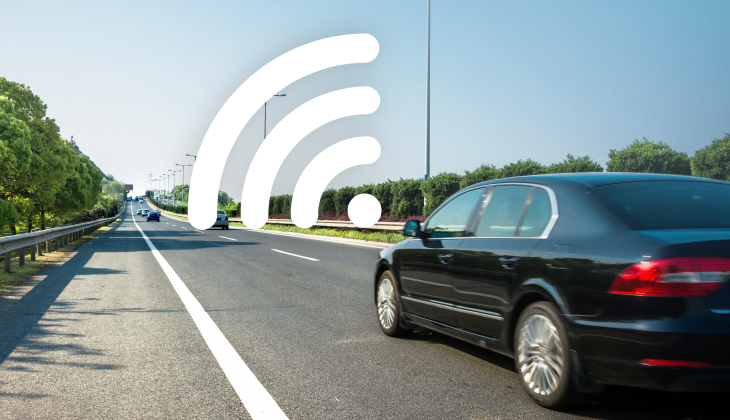In-car Wi-Fi - can you have it?
Chris Hogan, 1st February 2018, Household
More new cars are coming to the market with in-car Wi-Fi as an optional extra, sometimes as standard. Can you install it in your existing car and how difficult is it?

It's important to understand that all forms of car Wi-Fi, whether add-on or built-in, use mobile data for the actual internet connection, the Wi-Fi just shares that mobile connection around the devices in the car. Your car won't be able to piggy-back off the Wi-Fi service of passing coffee shops, you'll have to pay for a SIM card and data.
So it's not really that different to using your phone in a car with your data contract. There are instances where it would be useful though, for example saving money for friends and family, allowing passengers to connect with tablets that don't have a SIM card, or for taxi and limousine drivers to make their services more attractive to clients.
Let's take a look at the various ways of doing it.
Do-it-yourself
You can actually offer in-car Wi-Fi using the 'hotspot' facility that most iPhones and Android phones now have. Turn it on in your phone's settings and three to five other people (depending on your phone) will be able to connect to the internet though your phone, once you give them access.
As well as connecting to the phone's hotspot via WiFi, many phones will allow connection via Bluetooth or USB cable as well. This is useful for connecting laptops and other devices that might not have Wi-Fi.
They will ALL be using your 3G/4G data connection though, so make sure you're prepared to pay for it if you run out of data!
Alternatively, if you are on a journey with friends or family, you can take it in turns to share your connection. This means you can all share each other's data allowance to even it out over the journey.
Dongle-based routers
The next step up is a 'dongle' (often known as a 'Mi-Fi' module) that plugs into the cigarette lighter socket and acts like a household router. These are sold by most of the mobile phone operators and shops. Often the dongle will have a USB socket for charging as well.
All you have to do is issue the password and everyone connects - usually up to ten connections but check before you buy. Behind the scenes it's the same as the DIY method - the SIM card in the dongle has a data plan which you pay for just like a mobile phone.
It's easier as it's always in the car and you don't have to rely on passengers knowing how to setup hotspots. It also means the battery of the hotspot sharing phone isn't being hammered all the time.
Built-in Wi-Fi
Finally, built-in Wi-Fi is technically the same as a dongle but it won't take up the lighter socket and is controlled through the car's dashboard control system - all much easier.
Built-in systems allow even more connections - typically up to twenty - and 3G/4G reception should be better as it'll use a larger aerial, integrated into the car.
There are other side benefits too. For example, Ford intends to install Wi-Fi at its dealerships so that cars can automatically receive software updates for the various computer systems in modern cars, while they are parked up. This will mean every car will be running the most up-to-date software, something that will become increasingly important as the computerisation of vehicles develops.
Choose your own
So there you have it - if sharing Wi-Fi could be useful and your car doesn't already have it, then you have two options - using a hotspot through a smartphone or buying a dongle. If you want more than five people to connect, it's probably worth getting a dongle.